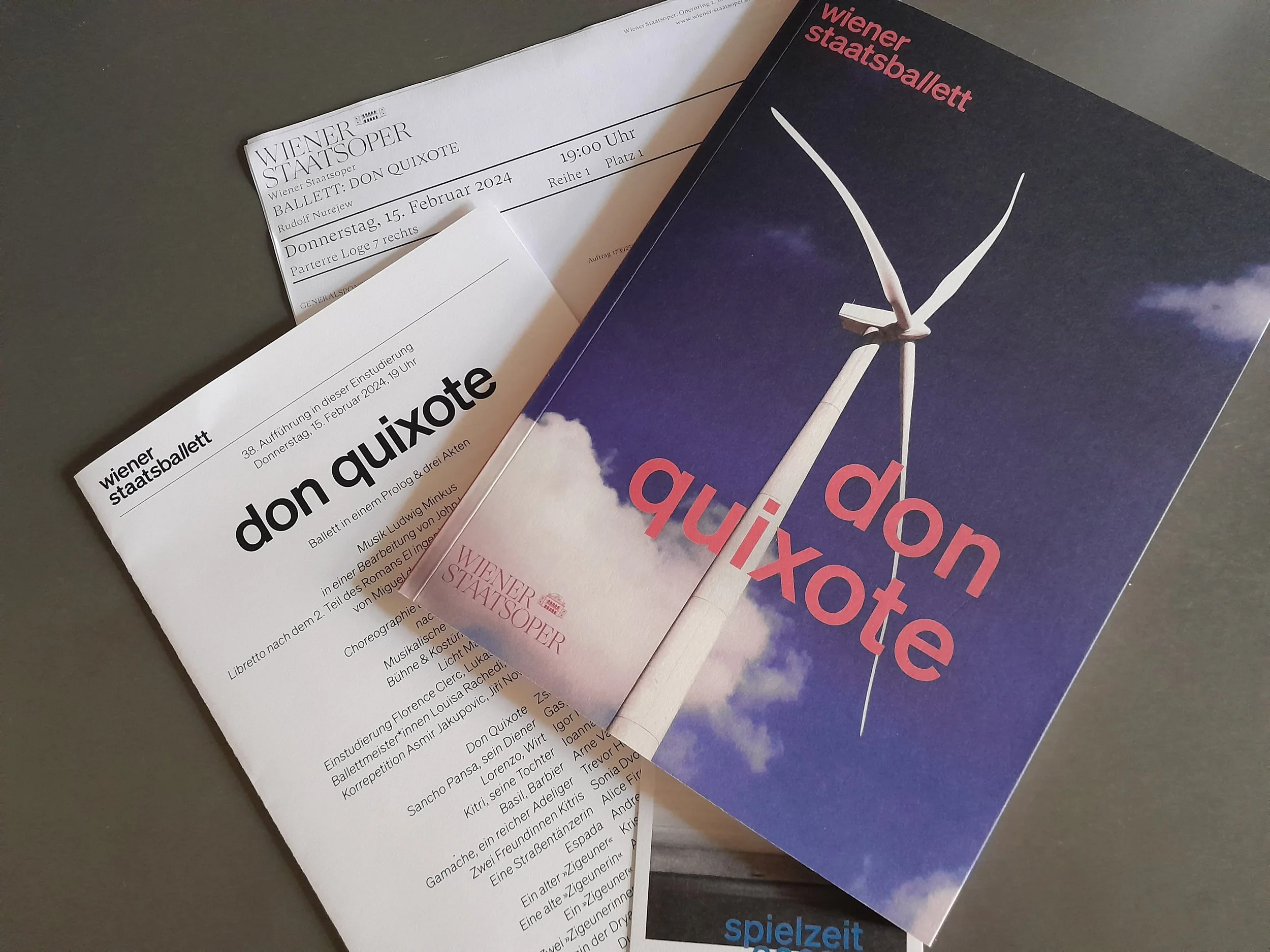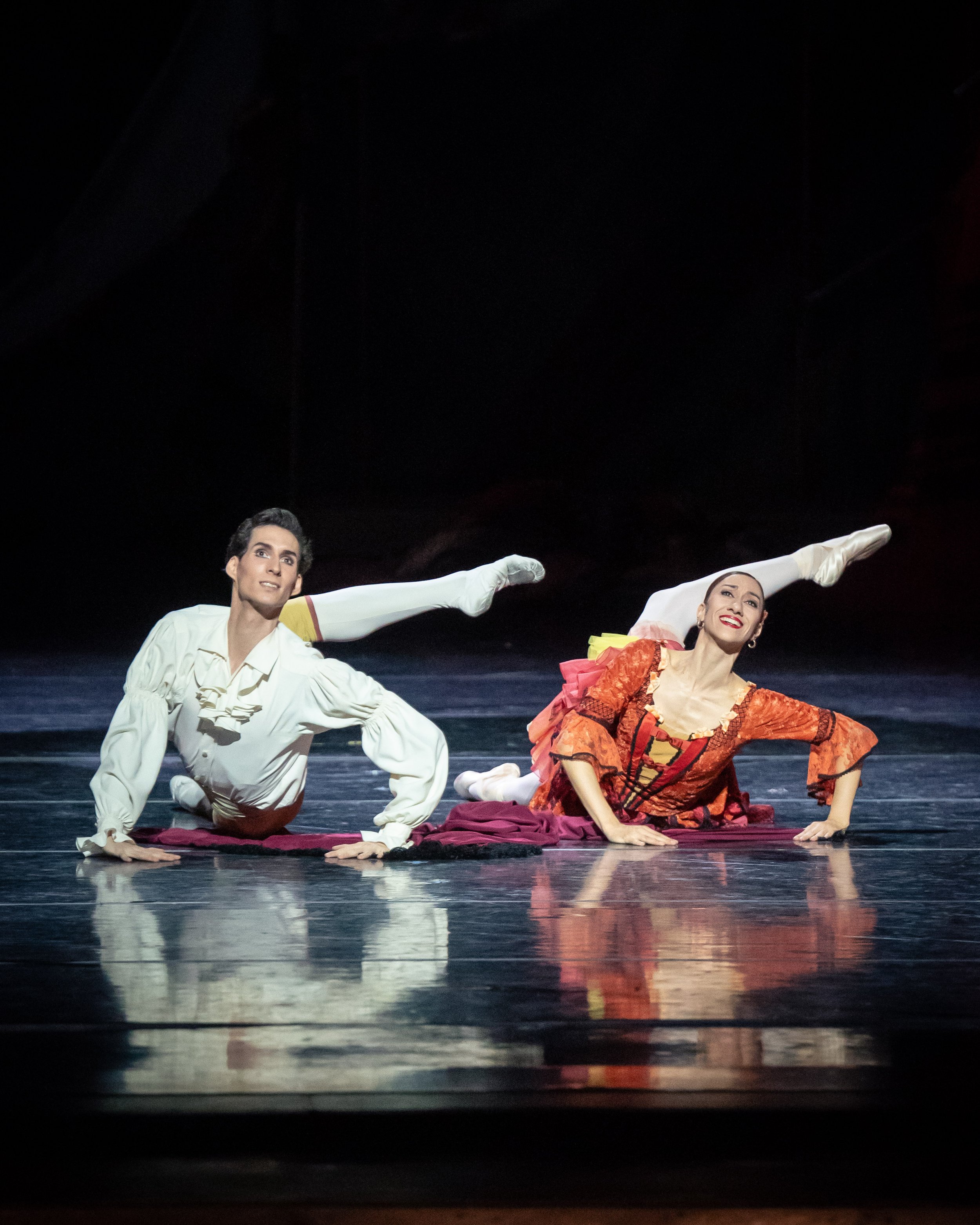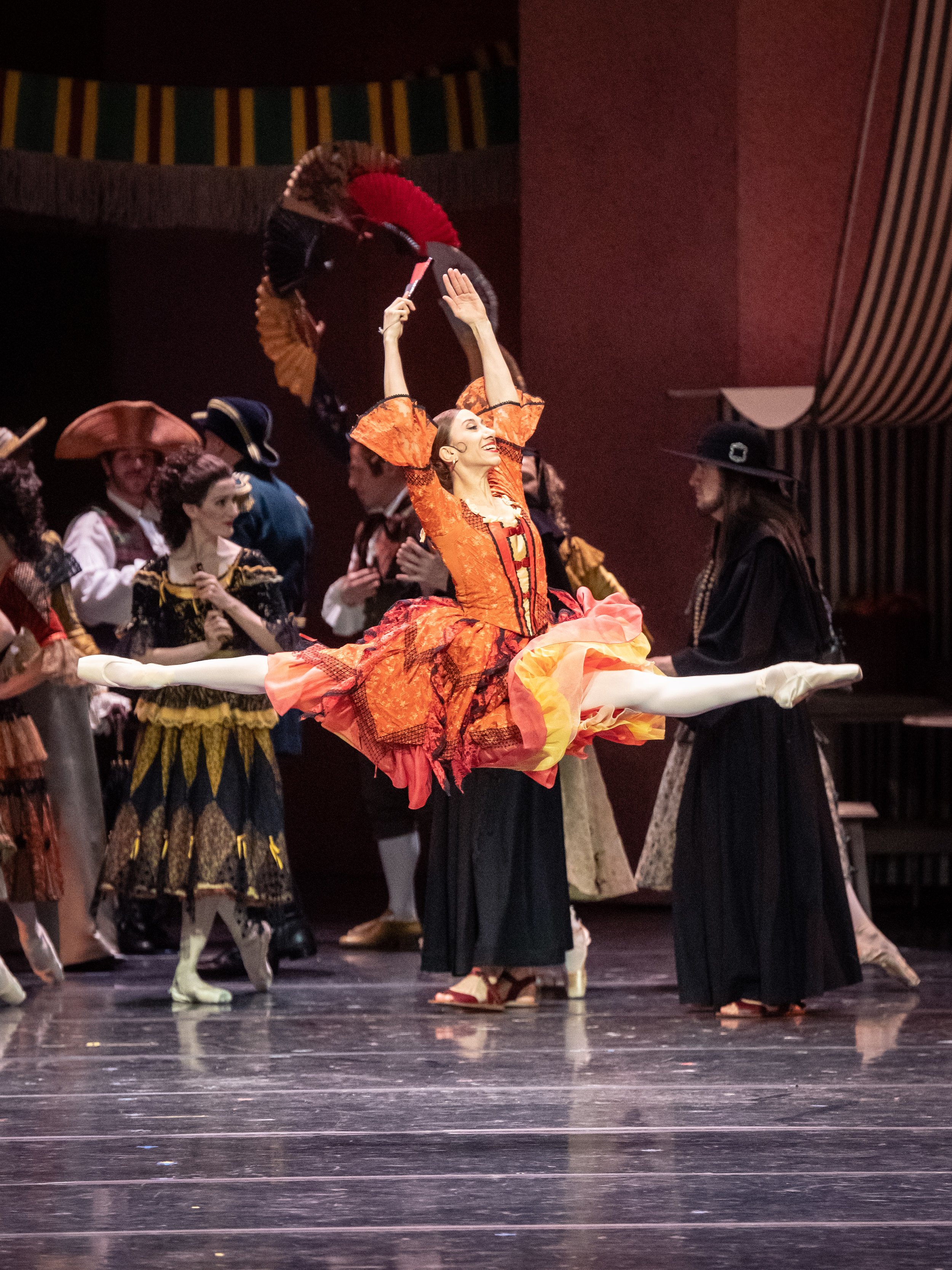Don Quixote, revisited: February 15th, 2024, Vienna State Ballet (Wiener Staatsballett)
At last the long-awaited début of Ioanna Avraam as Kitri. Due to an injury last year, she was unable to perform. I do believe in the following thought, as „preached" in Buddhism: Things happen because they must happen. There is a reason for that. And acceptance of this can only help one in understanding things and fate much better.
Miss Avraam had nearly one year more to research and absorb Kitri's character. An opportunity, with more introspection, to examine and consider „her" Kitri in detail. Deeper.
The results could not have been more rewarding to the audience.
Nureyev was not at the height of his „inspiration" as he created D.Q. For himself.
As we all know, Nureyev's choreographic skills remain to this day a „theme" in ballet circles: Some greet his work with cheers, others analyze it more carefully (as it is quite obvious that he choreographed the main male roles for himself, focusing on the „abilities" that came naturally to him), and a great number of others see them as quite „questionable".
As he put it quite plainly once, he wanted to do comedy, but “they” wouldn't let him, so he decided to do it himself. But, and here is my main question, did he understand what comedy and its timing are all about?
As a result, he created a ballet with so many scenes that offer the opportunity to the Corps and the soloists to be „funny". Continuously. But comedy is not that simple.
I'd rather say that well-interpreted comedy is even more difficult than tragedy.
You see, one thing is being funny. This requires technique. Even Brecht, known for his seriousness, managed that in his „Mr Puntilla and his Man Matti", while using the well-known „Rule of three", as Chaplin did, with very positive results.
The other is insisting on being funny and believing that one is „funny", with disconcerting, embarrassing results.
The (quite neglected? Or just not well “preserved”?) staging by Florence Clerc, Lukas Gaudernak and Jean Christoph Lesage, intendedly and obviously more preoccupied with the (what people calls now) „technical" side of the choreography, oversaw completely the essence of good comedy.
A good comedian never laughs at himself because he never thinks that he is funny.
He plays the comedy „straight", seriously (Think of Buster Keaton and his immovable face and lack of expressions).
Last evening's display of comedy can only be (precisely) described as „ineffectively insisting on being funny", and trying hard to do it while „believing to be funny". Too mechanical. Awkwardly the audience reacted emotionless, as it did with Trevor Hayden's embarassingly pretentious „Gamache".
As the „comedy" side never reached a hint of real comedy, it took nearly the whole of the first act for the members of the Corps de Ballet to warm up and bring the piece to a state of „get going". An ardous way. Fortunately for us, all this happened but with the exception of Kitri and Basil (Ioanna Avraam and Arne Vandervelde). Roles played by Artists, who gave more than an intelligent understatement to their characters. Not for one second did they „believe" they were funny. And exactly this gave them wit and the necessary comedy timing. But we will come to their performances a bit later.
I have written before about the lack of physical homogeneity of the Corps de Ballet. This time I will just point out and add more basic issues: Apparently a certain lack of proper training (It cannot be a coincidence that injuries have been happening so frequently in the company) is beginning to show more visibly and, as much as I feel sorry to have to write this, I am not exaggerating when I write of not properly pointed feet and stretched knees on stage. This Corps de Ballet is in trouble. So much to it.
Gaia Fredianelli’s first Bridesmaid left no real impression. An adequate (and very correct) performance with less projection from a very young dancer, who, has joined the company just shortly and still has lots to learn about stage presence.
Giorgio Fourés, a strong dancer, gave the audience a very good and dynamic „Gypsy" (Note: I am using this word, which is no longer considered politically correct, just because it is written this way as the character's name at the Vienna State Opera's Programme). A performance of substance. I believe Mr Fourés would not only fill the technical requirements to portray „Espada" but would also suit the role in age. No question about a very clean „French" technique due to his partial formation at the Ballet School of the Paris Opera.
Andrey Teterin's „Espada" rendition was what can only be described as average from beginning to end. He executed it all correctly but very linearly. No dynamic to be seen and a certain feeling of disinterest. Mr Teterin, half soloist, did not have many opportunities in the past but I can remember that he once danced Albrecht in „Giselle" as well as Hylarion. Everybody expected so much from this dancer.
Alice Firenze, a gifted dancer, repeating her role as „The Street's Dancer" is what can be called an eye-catcher. I do not think the role a very demanding one but there is a need of its coaching to Miss Firenze from A to Z again. Was there not enough time to do that? There are more possibilities to highlight and give more subtle emphasis in certain passages.
Kitri's two friends were correctly played by Anita Manolova and Sonia Dvořák, who, musically, was a bit more at ease with the „square certainty" of the score (also as “Amor” although the combination on stage with Gala Jovanovic and Ioanna Avraam was not very flattering to her, ). The „Friends" can be definitely more vibrantly played – but, as mentioned before, this time it took very long during the first act until the performance became „alive" with a sense of „presentness" from all members of the Corps de Ballet.
Gala Jovanovic is an imposing „Queen of the Dryads": Stage presence, Looks, technical competence, artistic command – even if in one particular, and very technically challenging solo (the same one used by Fonteyn in Adam's „Le Corsaire", a waltz not by Minkus but by Anton Simon and orchestrated by Drigo), she did not quite „make it". But who cares? Not I. I prefer a performance like this: a performance that tells a story, makes the audience travel through the character's moods, and, most of all, enriches our sensibility.
Arne Vandervelde, who also had his début as Basil, gave a very sensible reading of the role. I have heard some people say that he was „miscast" as Basil or that he is too serious and rather „just" a Danseur Noble (Note: “Just”?). I could not disagree more. I will not go again into what I think of the misinterpreted sense of „comedy" of this whole production but exactly that is what makes Mr Vandervelde's (and Miss Avraam's) interpretation so much more believable. From his first moment on stage, one could feel that he „had" the role even if he was clearly quite nervous during the first half of the first act: A long-legged, turned-out, tall, gifted and elegant Dancer who knows how to display to the public his classic dancer's assets to the best. I must admit that I was a bit worried at the beginning of the evening as he, while partnering and assisting Miss Avraam, constantly took her away from her axis, not only during pirouettes but also while holding her in arabesques etc. He took hold of himself after a short while and from this point on, gave a very substantial performance, with extreme sureness in his jumps, very clean, noble pirouettes while acting the part very well and partnering Miss Avraam with great strenght.
Ioanna Avraam's „Kitri" and „Dulcinea" are well-thought-of characters, to the last detail.
But let us now concentrate on Kitri: How many superficial ones have I seen in Nureyev's and other versions? Take Miss Avraam and, for example, think of her when leaving the stage in Gamache's company. An „unimportant" moment, you may say, but exactly in these moments you can see if a character is „complete" or not (Many dancers, when not specifically „dancing", leave the character behind. Not Miss Avraam. She just leaves the character after leaving the stage. Supposedly). Her Kitri portrayal is free from superficial affectations, without the stereotypes that are automatically identified and connected with our temperament's notion of the Spanish people. Something eternally plastered, cemented in our imagination by „Carmen" and by the French superficial ways to form a standard image of a type of person. In this case the „Olé, Olé, Olé stuff" all the time. This (Miss Avraam's) Kitri is neither categorized nor typecast. And (Thank God) we witnessed neither exaggerations nor „phoney " vivacity.
Technically she could not have been better – from stylish details to the 32 fouettés, from using her „abanico" (fan) to impetuous grand jétes, from her precise (and coquettish) use of Croisé, Effacé, Ecarté giving delicate nuances to the character up to her delicacy and vulnerability while being partnered – the list could go on, but knowing Miss Avraam's seriousness towards her work, I am positive that this was just the beginning.
And I must add; Effervescence at the right „dosage".
Unfortunately one must mention the lack of empathy towards the dancers coming from the orchestra pit in the person of conductor Robert Reimer, who, is not a ballet conductor.
To make a long story short: even if there are many flaws in the production as a whole, a few members of the cast, especially Mr Fourés, Miss Jovanovic, Mr Vandervelde and Miss Avraam are worth watching Nureyev's (uninspired) production of „Don Quixote".
Ricardo Leitner
a t t i t u d e
February 16th, 2024.













